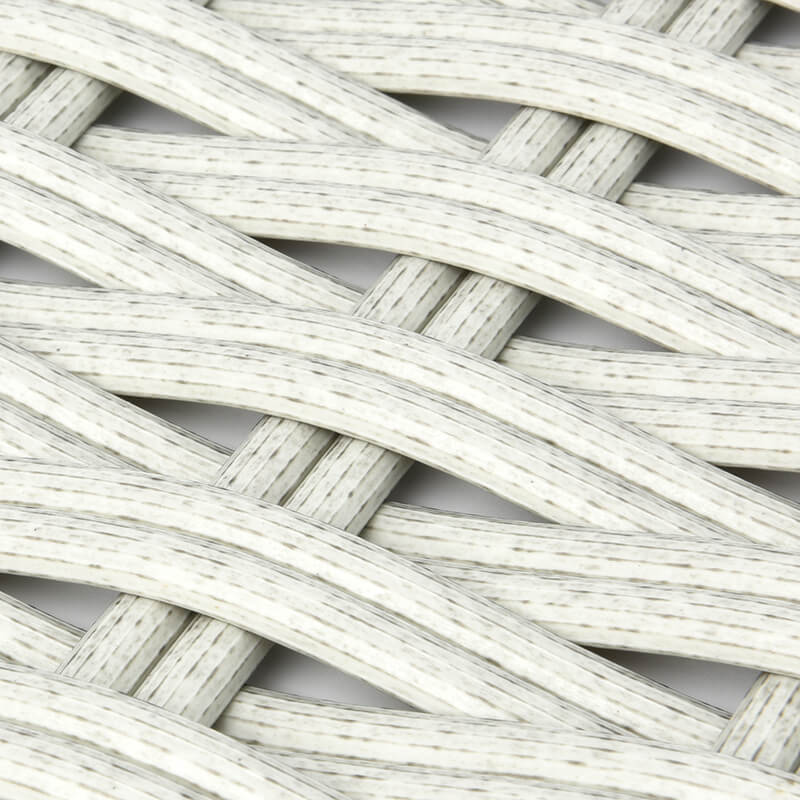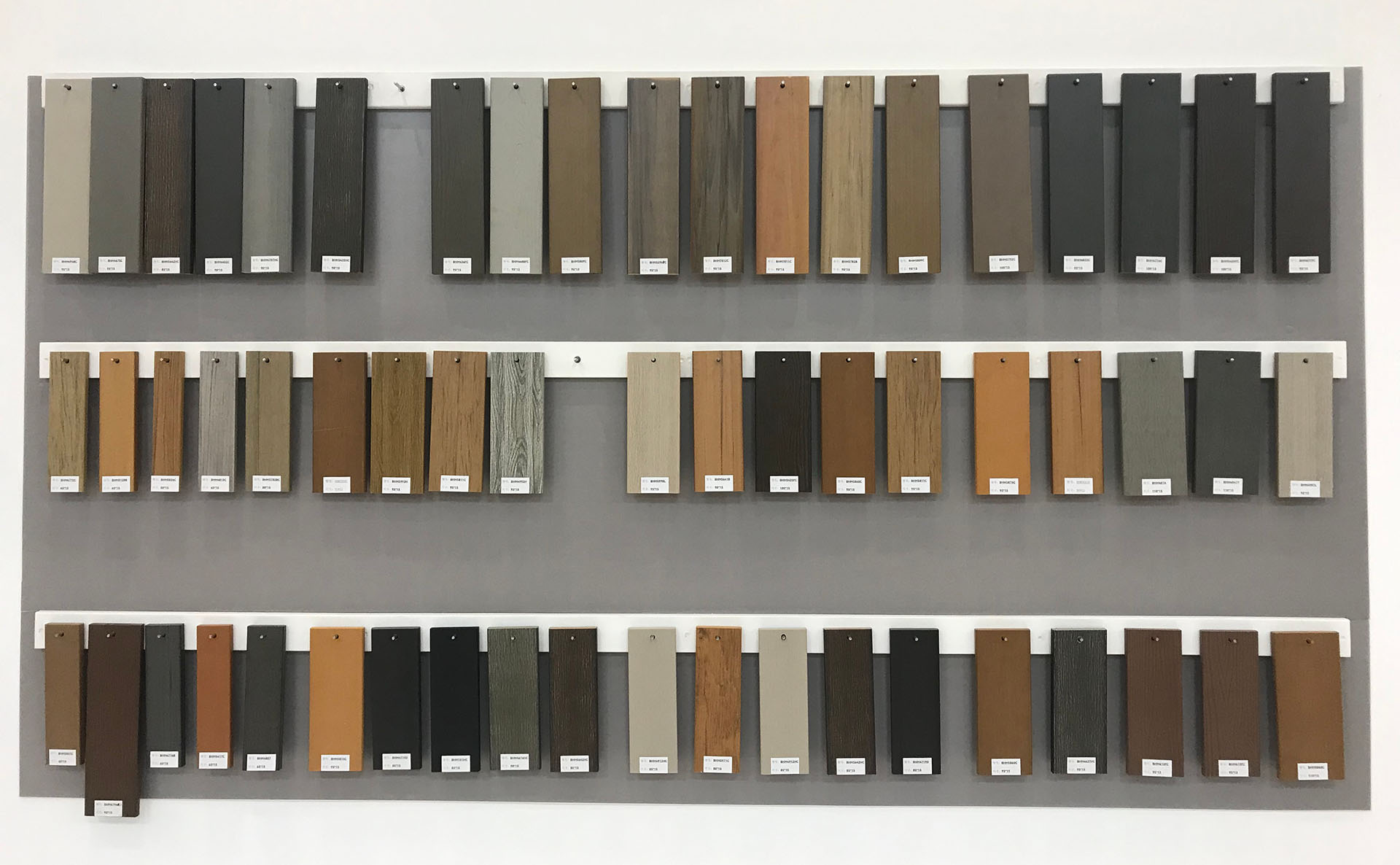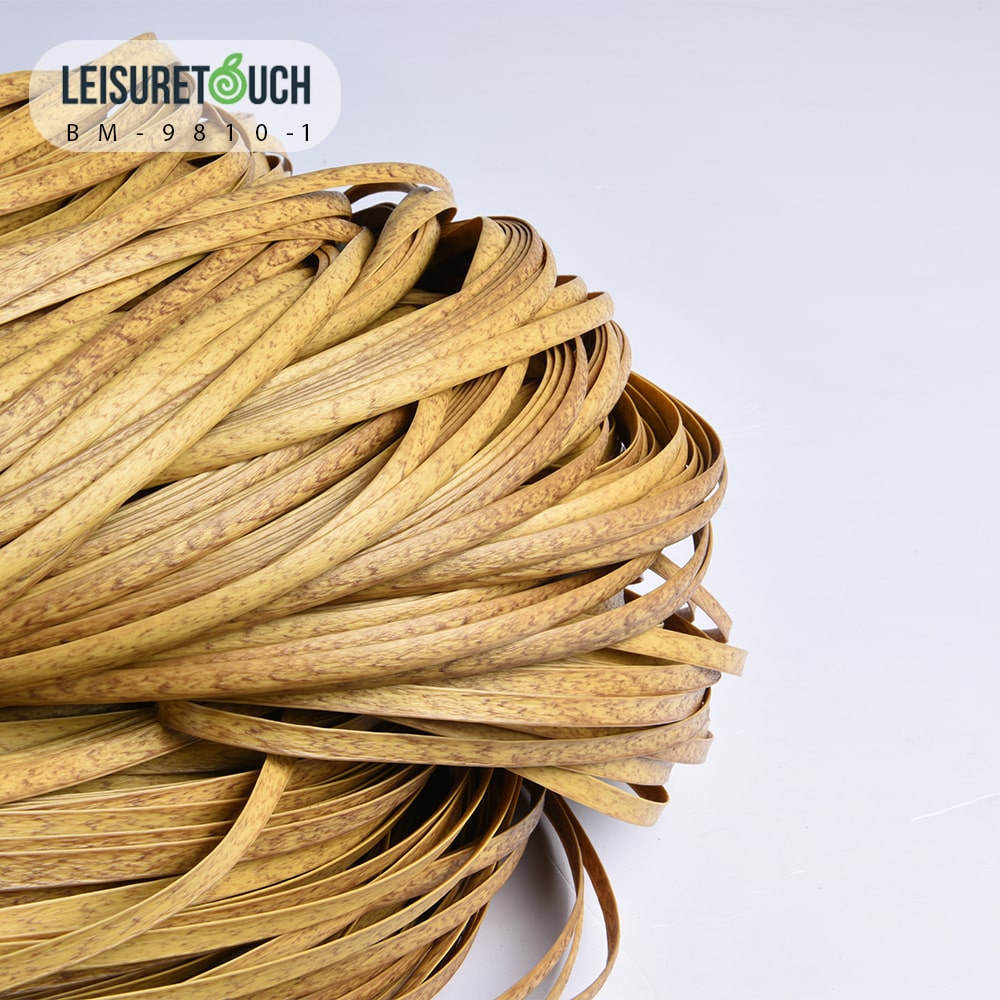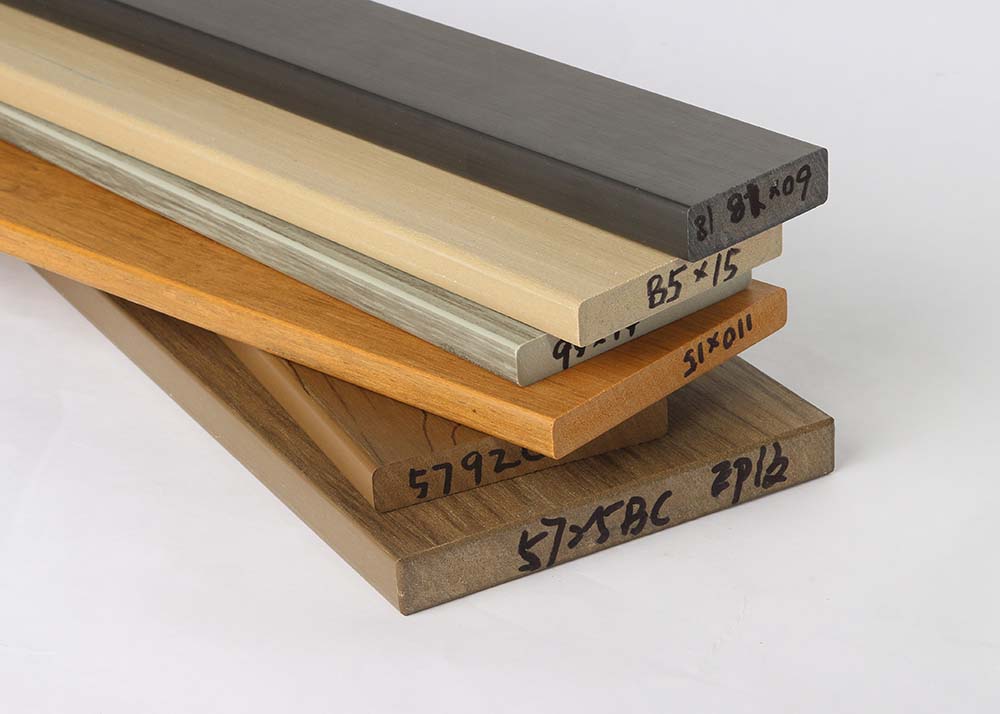Are you looking for high-quality artificial thatched materials for your outdoor roofing constructions and trying to learn more useful information to help enhance your outdoor projects? Here, I will provide you with comprehensive information about artificial thatched roofs. After reading this article, you will have a better understanding of various types of thatched roof materials and their advantages and disadvantages.
Background of Thatched Roofing
As a type of popular construction material, thatched roofing is commonly seen in our daily lives. When you travel to some famous resorts, visit outdoor zoos or go to some coastal restaurants and bars, you will normally see the presence of thatched roofs in these constructions since the thatched roof material can easily create a sense of tropical vibe to the overall environment. People can be relaxed and calm under such a chilling atmosphere.
The design of thatched roofing is deeply rooted in outdoor and eco-friendly design, evolving through centuries as a sustainable and aesthetic roofing option. Along with social development and people’s increasing awareness of environmental protection, synthetic thatched roofs have emerged as a wonderful alternative to natural thatched materials, especially the ones that are crafted from plastic materials.
What Is Natural Thatched Roof Material?
Some people might be confused about what thatched roof material actually is. That is because when you search this material online, you will see a lot of natural thatched roofs that are made of different plants.
Actually, thatched roof refers to a specific type of roofing style instead of a specific type of plant. It is a traditional roofing technique made of dry vegetation such as straw, water reed, sedge, rushes, heather, or palm leaves. Because of its rustic charm, natural insulation, and environmental compatibility, it is popular in some outdoor roofing constructions, creating a durable and waterproof covering for diverse buildings such as tiki huts, park nipa huts, hotel lounges and so on.
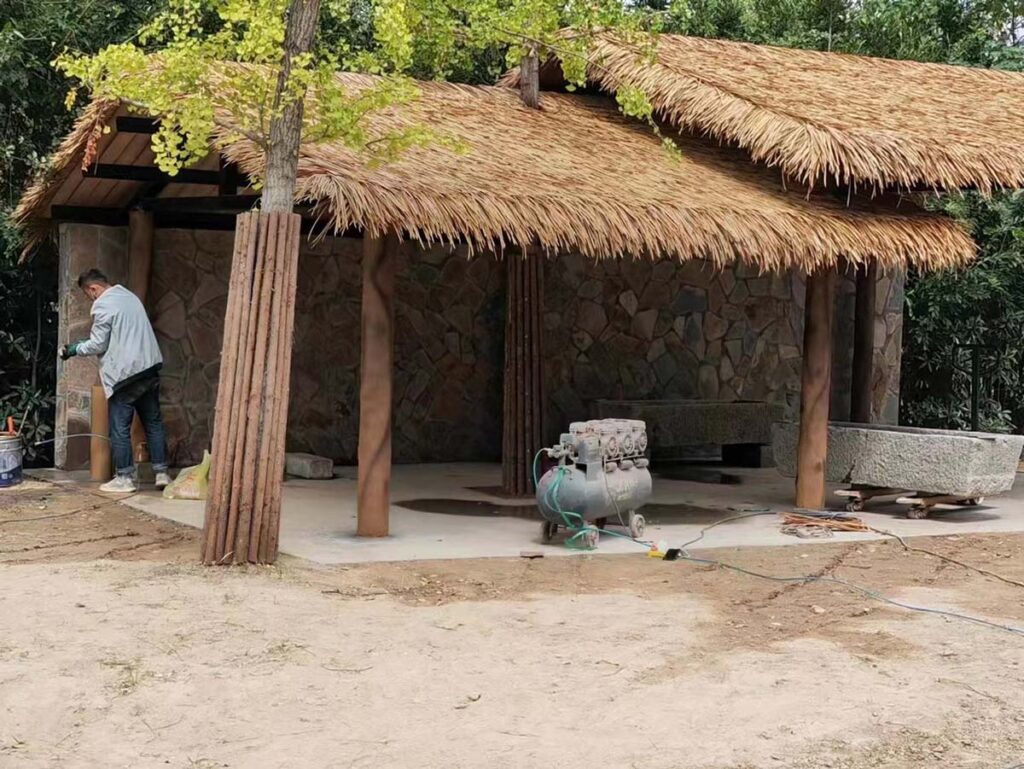
Because of the unique layered construction method of thatched roof, the rainwater can be easily diverted. What is more, as a natural insulator, it can help trap air and regulate interior temperatures, making your building cool in summer and warm in winter, suitable for most outdoor architectural projects. If you pursue the original beauty of natural palm leaves, straw or reed, natural thatched will be your premier choice!
What Is Artificial Thatched Roofs?
As people’s environmental consciousness continues to grow, synthetic alternatives to natural thatched roofs become popular, particularly in the form of plastic thatch. Because of its sustainability, an artificial thatched roof is normally crafted with high-quality HDPE plastic material and some additional additives such as anti-fading, anti-ageing and fire-resistant ingredients. Artificial thatched roofs are popular for many outdoor architectural projects with a strong ability to mimic the look and feel of natural thatch while offering enhanced durability and weather-resistant benefits.
Why Do People Get Artificial Thatched Roof?
Unlike traditional thatching which requires a lot of effort to clean and maintain, plastic thatched roofs can survive for a long time in outdoor settings since it is totally made of plastic materials. It will not decay, shed, or attract pests, making it an ideal choice for both residential and commercial outdoor spaces.

This modern material provides a balance between natural aesthetics and long-term functionality. As outdoor design trends emphasize natural beauty, Leisure Touch Rattan’s high-quality artificial thatched roof stands out as an attractive and environmentally conscious option for various applications. If you are looking for a long-lasting roofing solution, synthetic thatch is suitable for you!
Different Types of Thatched Roof Materials
In the market of construction materials, there are several types of thatched materials that are popular for roofing projects. Here, I will reveal four different types of thatched roof materials for you, helping you select the suitable one for your roofing projects.
Asian Style vs. Africa Style Thatched Roofs
Africa Style: Africa-style thatched roofs are normally crafted in a more robust feeling with sun-resistant materials reed, grass or cape reed, which is suitable for areas with hot and dry climate. It is sometimes manufactured in different colours such as red, orange, blue, green and yellow to express a sense of enthusiasm. Africa thatched roofs are thicker as they can provide better insulation to the architecture, keeping the interiors cool under the intense sun.
This type of thatched roof is usually built in rounded or steep cone shapes, creating a rustic, natural appeal. It is practical for shedding rain and is deeply rooted in indigenous architecture. It is common to see Africa-style thatched roofs in round or hexagonal huts in villages and safari lodges, evoking a strong sense of place and heritage.
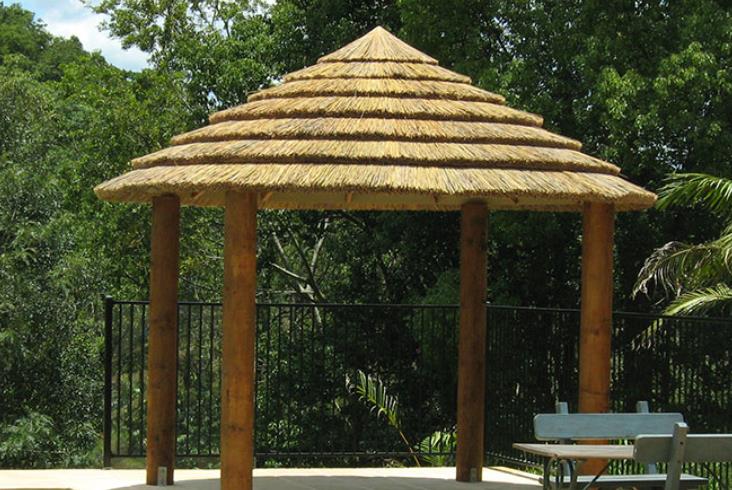
Asian Style: This style of thatched roof is more common in our daily life since it presences a more relaxing and peaceful feeling, which can help people calm and chill. Asian thatched roofs are normally manufactured with palm leaves, nipa, bamboo or rice straw, reflecting the region’s lush and tropical environment. This type of thatched roof offers a more refined and elegant look compared to Africa Thatched Roofs.
It is normally constructed in roofing less steep and with broader, flatter structures designed to withstand tropical rains. Asian thatched roofs are normally associated with relaxing places such as tropical resorts, tiki huts, meditation houses, coastal bars and so on, representing a symbol of relaxation and tranquillity. This type of thatched roof can perfectly blend with natural surroundings and emphasize a harmonious environment.
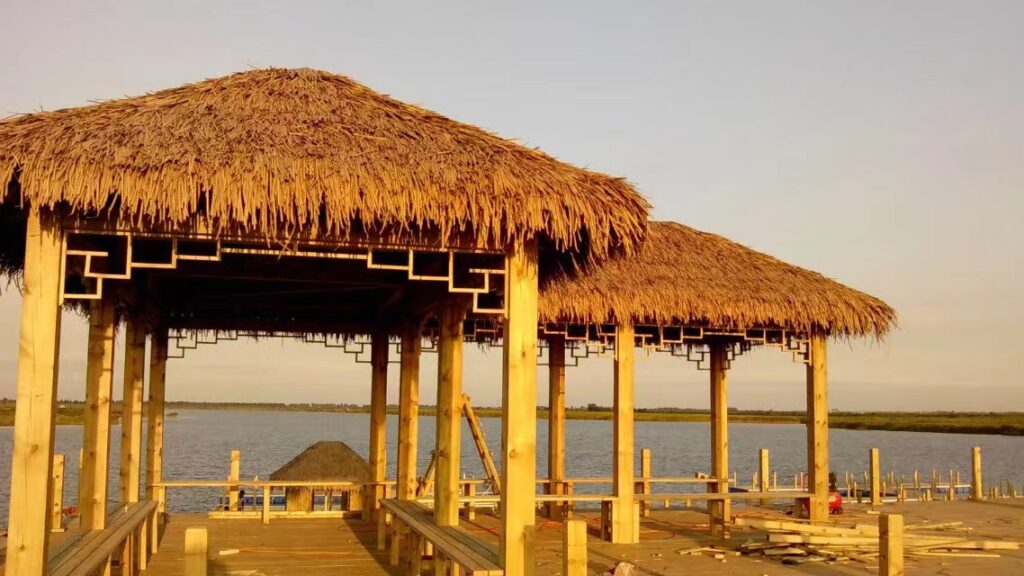
Carpet Type vs. Regular Straw Thatched Roofs
Carpet-type thatched roofs and regular straw thatched roofs differ significantly in their designs and appearances.
Carpet Type Thatched Roof: Just like the name suggests, this type of thatching roof is normally crafted into a pre-made thatch panel that is similar to a carpet. The thatching material such as straw or reed, is attached to a large base by production machines, creating a modular panel for roofing projects. Offering a consistent and uniform look, the carpet thatched roof is easier to install compared to the regular straw thatch because of its panel design. It is especially popular for commercial projects such as hotel roofing and resort restaurants due to its efficiency and streamlined look.

Regular Straw Thatch: For this style, each separated straw is brought together to form a shape that is similar to the head of a broom, creating a rustic and natural aesthetic. This style is valued for its textured, authentic appearance by engineers and designers. Compared to carpet thatched roof material, installing regular straw thatch requires skilled craftsmanship and is more labor-intensive, suitable for residential or outdoor roofing projects wanting a traditional and natural feel.

If you are sourcing for large-scale resorts and entertainment spaces, carpet thatched roofs suit you the best. However, if you prefer a more natural look, regular straw thatched roof will be your ideal choice. As a leading construction material supplier, Leisure Touch Rattan provides high-quality artificial versions of different thatched roof materials. Visit our website for more details!
How Long Can Thatched Roofs Last Outdoors?
The lifespan of artificial and natural thatched roofs differs significantly. Artificial thatch roofs, crafted from durable materials like polyethylene (PE) or PVC plastics, can last 20–50 years outdoors. They have a strong ability to withstand UV rays, rot, pests, and mold, making them a long-lasting and low-maintenance choice.
In contrast, natural thatch roofs are normally made from real reed, straw, or palm. They can typically last 15–30 years with regular upkeep. Their lifespan largely depends on climate, installation quality, and maintenance. If proper cleaning and maintenance is done regularly, the service life of natural thatched roofs will be longer.
Pros & Cons of Artificial Thatched Roofs
Pros:
Environmentally Friendly: Crafted from sustainable PE plastic, artificial thatched roofs are eco-friendly and contribute to environment protection. This eco-friendly solution helps reduce the need for natural thatch harvesting and helps preserve natural resources.
Natural Look: Imitating the natural look and texture of real straw, synthetic tiki roof acts as a perfect alternative to traditional thatching, creating an inviting charm to any construction.

Weather-proof: Designed to withstand harsh weather conditions such as strong sunlight, rain and wind, synthetic thatched roofs have a long service life. Its resistance to fading and moisture absorption ensures long-lasting performance in different climates.
Waterproof: Because of the high-quality PE material, the artificial thatched roof is 100% waterproof. This feature can protect materials from water penetration or rot, making it suitable for roofing projects around coastal areas or poolside.
Safe: In order to increase the safety level, fire-resistant ingredients are added to the manufacturing, helping you minimize the fire risk when artificial thatching is under open flames or high temperatures. Some of LTR’s artificial thatched roofs meet the B1 fire-retardant standard, creating a safe and relaxing outdoor space with no worry.
Durability: Unlike natural straw thatched roofs, artificial thatching can maintain its aesthetic look over time with minimum care and maintenance because of its premier PE plastic material.
Easy Installation: With minimum tools and technique needed, artificial thatched roofs are easier to install compared to other roofing options. It is lightweight and flexible, suitable for your roofing construction and decoration.
Easy Cleaning and Maintenance: Artificial thatch roofs are waterproof and can resist mould, mildew, and pests, requiring minimal upkeep to maintain their beauty and simplify your customers’ cleaning routines.
Full Customisation: Because of its unique processability, the sizes, colours and patterns of artificial thatch can be customised according to your preferences and project needs.
Cons:
Initial Cost: Although artificial thatched roof is a cost-effective construction material, its initial cost may be a barrier for some businesses. If you pursue high-quality PE plastic material, your cost will be higher. Any necessary accessories for better performance such as surface protection, underlayment or insulation, will also contribute to the overall cost.
Limited Authenticity: As a synthetic material, its appearance will not look exactly like natural straw or palm leaves. If you get closer or touch it, you will feel the plastic texture. It is not suitable for people who are obsessed with the original and natural beauty.
Fading: Despite artificial thatched is resistant to the problem of colour-fading, long-time sunshine exposure will still bring harm to the material, making it fail to retain the original colour over time.
Conclusion
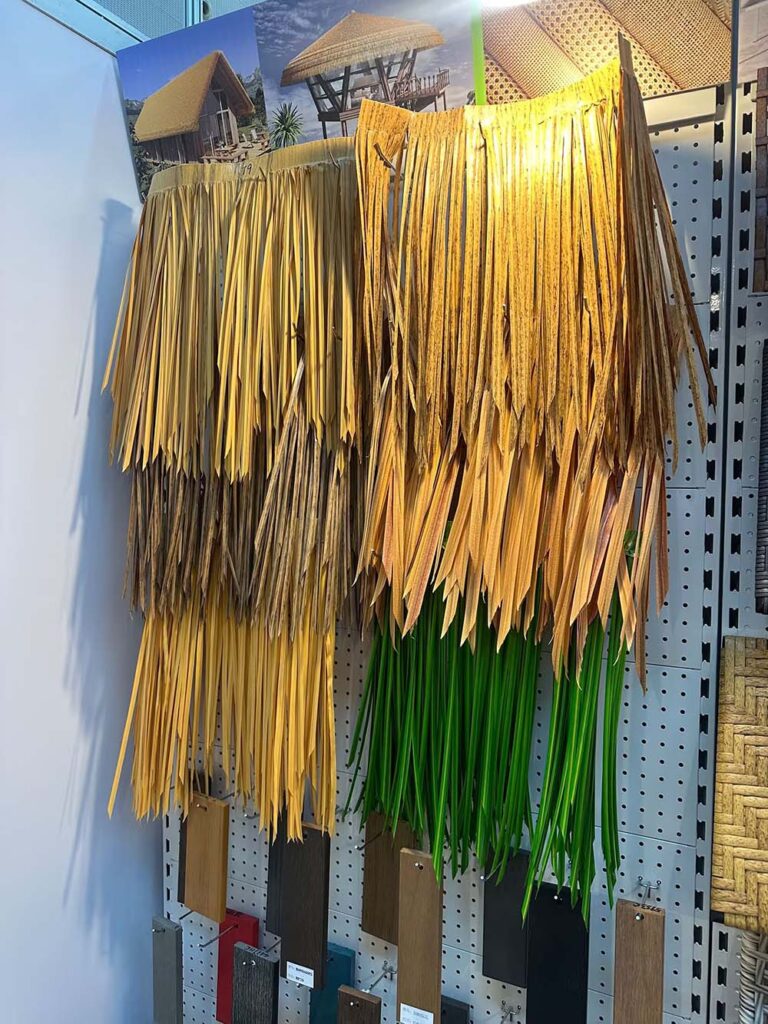
Now, you might already gained a better understanding towards artificial thatched roof material. As an eco-friendly alternative to natural thatching, it not only has a natural and aesthetic appearance but also has lots of benefits to survive longer in an outdoor setting. If you are interested in more synthetic thatched roof materials, contact Leisure Touch Rattan for more information!
As a sophisticated thatched roof supplier, LTR is always dedicated to offering you artificial thatching with the best quality and services, helping you turn any outdoor hut into a comfortable retreat.

